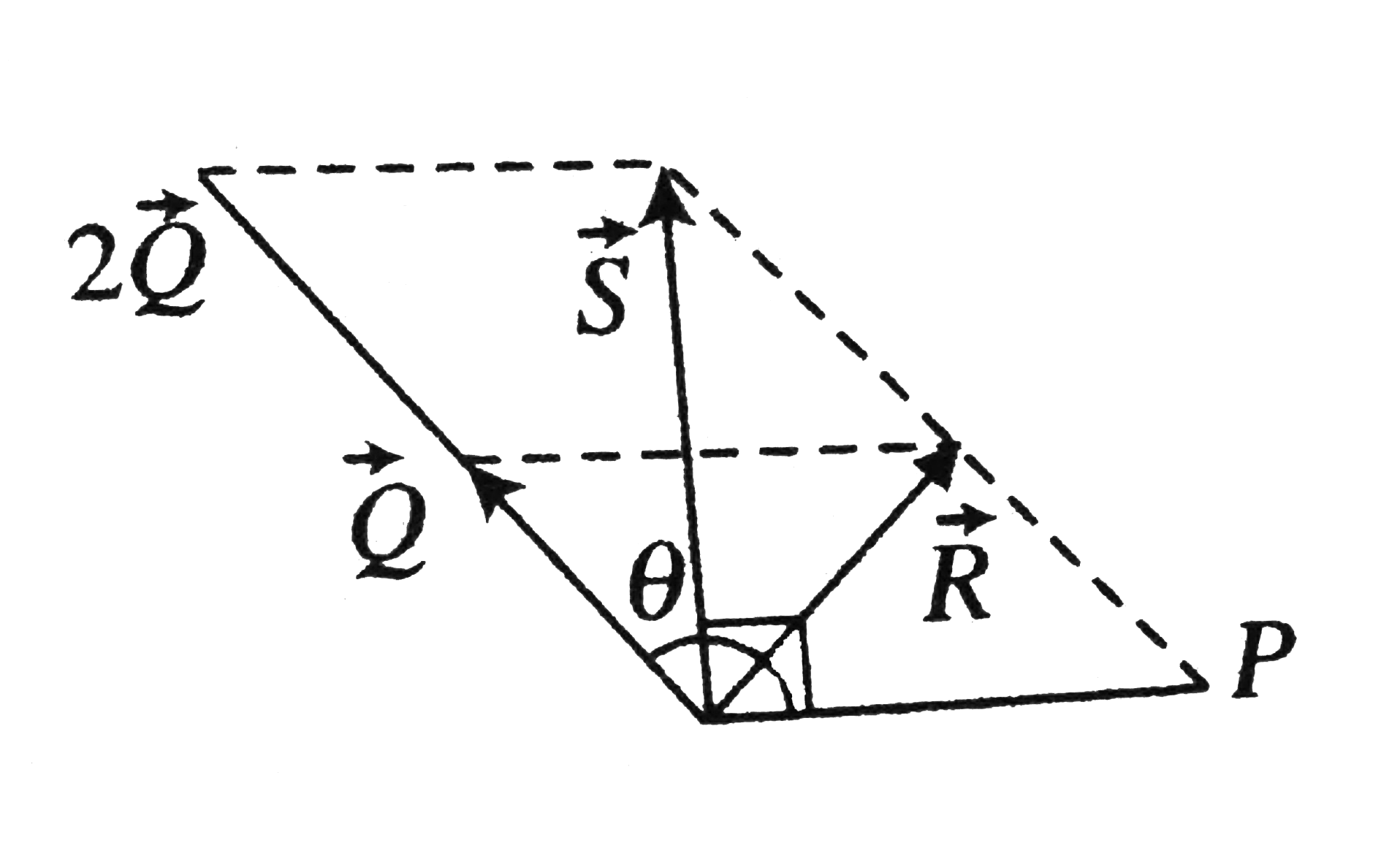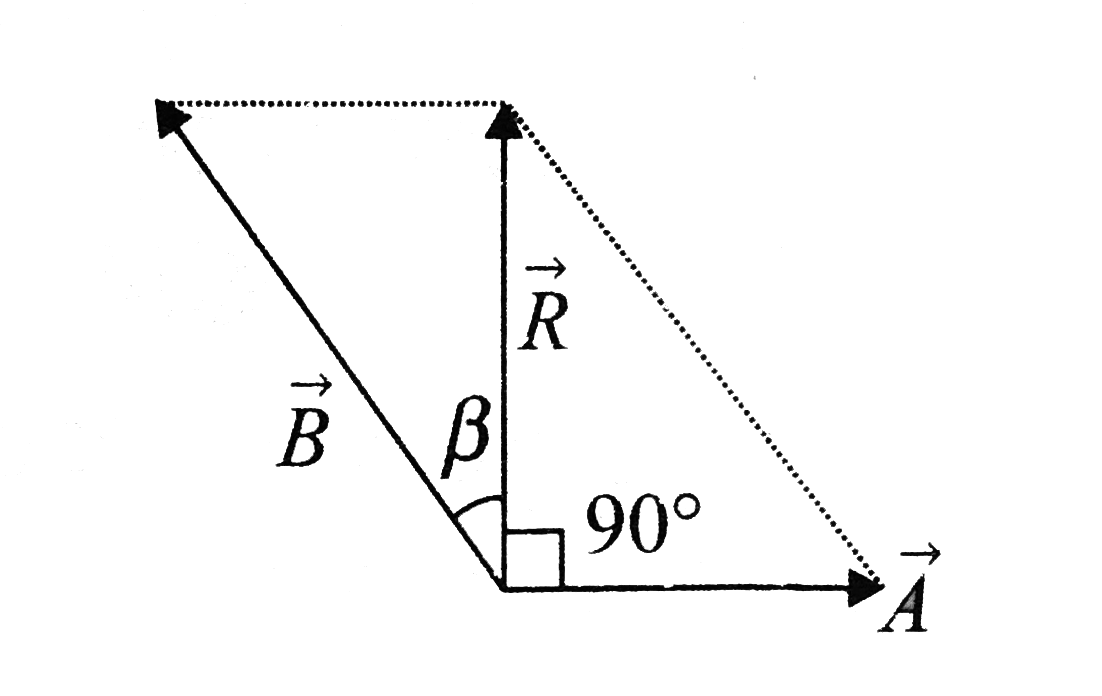The resultant of two vectors →P and →Q is →R. If the magnitude of →Q is doubled, the new resultant vector becomes perpendicular to →P. Then, the magnitude of →R is equal to
P+Q
P
P−Q
Q
The correct Answer is:D
tan90∘=2QsinθP+2Qcosθ⇒∞=2QsinθP+2Qcosθ
⇒P+2Qcosθ=0
Now R2=P2+Q2+2PQcosθ
Q2+P[P+2Qcosθ]
R2=Q2⇒R=Q
Alternative method:
→R=→P+→Q⇒→P=→R−→Q
and →S=→P+2→Q=→R−→Q+2→Q=→R+→Q
Now, →S and →P are perpendicular(figure), So
→S.→P=0⇒(→R+→Q).(→R−→Q)=0
⇒→R=Q2⇒R=Q

Topper's Solved these Questions
- BOOK - CENGAGE PHYSICSCHAPTER - VECTORSEXERCISE - Exercise Multiple Correct5videos
VECTORS
- BOOK - CENGAGE PHYSICSCHAPTER - VECTORSEXERCISE - Exercise Subjective28videos
VECTORS
- BOOK - CENGAGE PHYSICSCHAPTER - TRAVELLING WAVESEXERCISE - Integer9videos
TRAVELLING WAVES
- BOOK - CENGAGE PHYSICSCHAPTER - WORK, POWER & ENERGYEXERCISE - Archives (integer)4videos
WORK, POWER & ENERGY
Similar Questions
Knowledge Check
- Question 1 - Select One
The resultant of two vectors →P and →Q is →R. If →Q is doubled then the new resultant vector is perpendicular to →P. Then magnitude of →R is :-
AP2−Q22PQBQCPQDP+QP−Q - Question 2 - Select One
The resultant →Pand→Q is perpendicular to →P. What is the angle between →Pand→Q?
Acos−1(P/Q)Bcos−1(−P/Q)Csin−1(P/Q)Dsin−1(−P/Q) - Question 3 - Select One or More
if →P×→R=→Q×→R, then
A→P=→QB→P and →Q need not be equalCThere are infinite number of possibilities for →P (If →Q and →R are given ) which satisfy this relationship.D→p and →Q must be coplanar
The resultant of →Pand→Q is →R. If magnitude of →Q is doubled, magnitude of resultant is also doubled,when direction of →Q is reversed from initial condition then magnitude of resultant is again doubled, find P:Q:R.
View SolutionTwo vectors →a&→b have equal magnitudes of 10 m ,. Find the magnitude and direction of the resultant vector .
View SolutionTwo vectors →P and →Q are added, the magnitude of resultant is 15 units. If →Q is reversed and added to →P resultant has a magnitude √113 units. The resultant of →P and a vector perpendicular →P and equal in magnitude to→Q has a magnitude
View SolutionThe maximum value of the magnitude of the resultant of two vectors →Pand→Q is 24 units and the minimum value of the magnitude of their resultant is 4 units. What is the ratio of the magnitudes of the vectors →Pand→Q ?
View SolutionThe resultant of two vectors →A and →B is perpendicular to the vector →A and its magnitudes is equal to half of the magnitudes of vector →B (figure). The angle between →A and →B is
 View Solution
View Solution
